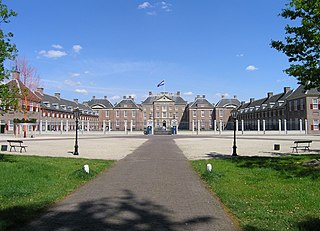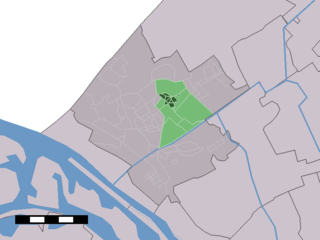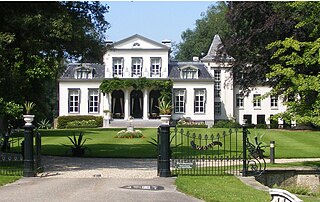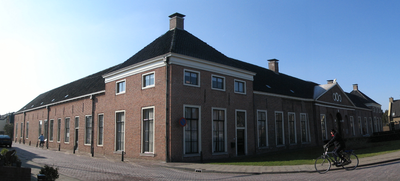
The House of Orange-Nassau is the current reigning house of the Netherlands. A branch of the European House of Nassau, the house has played a central role in the politics and government of the Netherlands and elsewhere in Europe, particularly since William the Silent organised the Dutch Revolt against Spanish rule, which after the Eighty Years' War (1568–1648) led to an independent Dutch state. William III of Orange led the resistance of the Netherlands and Europe to Louis XIV of France and orchestrated the Glorious Revolution in England that established parliamentary rule. Similarly, Queen Wilhelmina of the Netherlands was instrumental in the Dutch resistance during World War II.

William the Silent or William the Taciturn, more commonly known in the Netherlands as William of Orange, was the leader of the Dutch revolt against the Spanish Habsburgs that set off the Eighty Years' War (1568–1648) and resulted in the formal independence of the United Provinces in 1648. Born into the House of Nassau, he became Prince of Orange in 1544 and is thereby the founder of the Orange-Nassau branch and the ancestor of the monarchy of the Netherlands. In the Netherlands, he is also known as Father of the Fatherland.

John William Friso became the (titular) Prince of Orange in 1702. He was the Stadtholder of Friesland and Groningen in the Dutch Republic until his death by accidental drowning in the Hollands Diep in 1711.

William II was sovereign Prince of Orange and Stadtholder of Holland, Zeeland, Utrecht, Guelders, Overijssel and Groningen in the United Provinces of the Netherlands from 14 March 1647 until his death three years later on 6 November 1650. His death marked the beginning of the First Stadtholderless Period, leading to the rise of Johan De Witt, who stayed in power for the next 22 years.

Paleis Het Loo is a palace in Apeldoorn, Netherlands, built by the House of Orange-Nassau.

Prince of Orange is a title associated with the sovereign Principality of Orange, in what is now southern France and subsequently held by the stadtholders of, and then the heirs apparent of, the Netherlands.

Frederick Henry was the sovereign prince of Orange and stadtholder of Holland, Zeeland, Utrecht, Guelders, and Overijssel in the Dutch Republic from his older half-brother's death on 23 April 1625 until his death on 14 March 1647. In the last seven years of his life, he was also the stadtholder of Groningen (1640-1647).

Amalia of Solms-Braunfels was Princess of Orange by marriage to Frederick Henry, Prince of Orange. She acted as the political adviser of her spouse during his reign, and acted as his de facto deputy and regent during his infirmity from 1640 to 1647. She also served as chair of the regency council during the minority of her grandson William III, Prince of Orange from 1650 until 1672.

Mary, Princess Royal, was a British princess, a member of the House of Stuart, and by marriage Princess of Orange and Countess of Nassau. She acted as regent for her minor son from 1651 to 1660. She was the first holder of the title Princess Royal.

Noordeinde Palace is one of three official palaces of the Dutch royal family. Located in the city center of The Hague in the province of South Holland, it has been used as the official workplace of King Willem-Alexander and Queen Maxima since 2013. The Noordeinde Palace and its surrounding palace grounds are property of the Dutch State.

Huis ten Bosch is a royal palace in The Hague, Netherlands. It is one of three official residences of the Dutch monarch; the two others being the Noordeinde Palace in The Hague and the Royal Palace of Amsterdam.

Honselersdijk is a town in the Dutch province of South Holland. It is home to the historic Huis Honselaarsdijk, former palatial estate of the Dutch Princes of Orange. Huis Honselaarsdijk was one of the finest examples of Baroque architecture and grounds in the history of The Netherlands. Today, only part of the outbuildings remain, and these are referred to locally as "De Nederhof".

Albertine Agnes of Nassau, was the regent of Friesland, Groningen and Drenthe during the minority of her son Henry Casimir II, Count of Nassau-Dietz, between 1664 and 1679. She was the sixth child and fifth daughter of stadtholder Frederick Henry, Prince of Orange and Amalia of Solms-Braunfels.

The Order of the Gold Lion of the House of Nassau is a chivalric order shared by the two branches of the House of Nassau.

Oranjewoud is a small village in the Netherlands. It is located in the municipality of Heerenveen, Friesland. Oranjewoud had a population of 1570 in January 2017. It is known for Oranjewoud Palace.

Huis ter Nieuwburg or Huis ter Nieuburch was a palace in Rijswijk, Holland, Dutch Republic. The symmetrical French Classicist building was probably designed by the Dutch architect Jacob van Campen together with Constantin Huygens and the prince himself. According to Slothouwer the designs were carried out by Arent van's Gravesande who was replaced by the French architect Simon de la Vallée in 1634. The palace was built between 1630 and 1636 for stadtholder Prince Frederick Henry.

The monarchy of the Netherlands is governed by the country's constitution, roughly a third of which explains the mechanics of succession, accession, and abdication; the roles and duties of the monarch; the formalities of communication between the States General of the Netherlands; and the monarch's role in creating laws. The monarch is the head of state and the de jure head of government of the Netherlands.

Bartholomeus Corneliszoon van Bassen (1590–1652) was a Dutch Golden Age painter and architect.

Triumph of Frederick Henry, Prince of Orange is a painting by the Flemish painter Jacob Jordaens, signed and dated at the bottom left "J JOR fec / 1652". It is located in the Oranjezaal in the Huis ten Bosch in The Hague, The Netherlands.

Castle Buren or Buren Castle was a princely residence in Buren in the Dutch province of Gelderland. The castle was one of the largest castles in the Netherlands. It was the seat of the Buren branch of the Egmond family, as well as of the House of Orange. It has been demolished in the 19th century. Today, not much remains except a monument in the former bailey of the castle as well as model in the local museum.






















